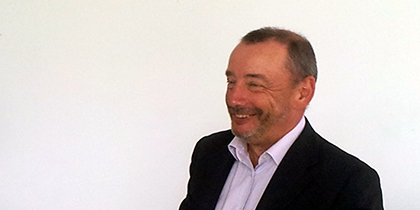
July 26, 2013, by Teaching at Nottingham
Supporting face-to-face collaborative learning using a Mahara group blog
Gordon Joyes:
The context: “The MA in Learning, Technology and Education is a course designed for professionals involved with learning technologies. This is currently a f2f course but will have an online version in July 2013. Moodle VLE is used, but a range of other technologies are used to enhance the learning experience but also to provide an experience of their use for the students so that they can critique them.
The teaching and learning challenges: “The course is designed to create opportunities for in depth discussion of issues and exploration of examples during taught sessions and extensive online materials in Moodle are used to support the preparation. How could I ensure students completed preparatory readings before the taught session?
“There are 14 students on the course, most of whom are 2nd language English speakers and lack confidence in their use of language yet need to share their understandings to get feedback on them as the course progresses. How could I ensure they participated effectively in classroom discussions? How could we share the collective ideas developed in the taught session and have access to these after the session?
The solution: “This is an example of what has become known as flipped teaching, but the approach adopted is a collaborative learning one used for some of the sessions that uses an online group blog to share activities set around the preliminary readings and activities. The students are given some common activities to complete individually and some different activities to complete in pairs or threes – these have tended to be the reading of key texts or reports around the topic for that week. These must be posted to the blog before the taught session. The outcomes of these activities are viewed online in the taught session and the discussion is led by the students. Each activity provides a different perspective and new information to consider and supports an in-depth critical analysis of the topic. My role as the lecturer is to support the discussion and to introduce other perspectives, usually done through prepared PowerPoint slide summaries and online examples of use of technologies.
The technology and the rationale for use: “This is the e-portfolio tool, Mahara and it usually surprises people that this is the tool used for this type of activity. e-portfolio tools need to have a range of functionality, including a shared blog, to support the multiple purposes e-portfolios can have. For an exploration of these see the JISC e-portfolio implementation toolkit https://epip.pbworks.com/. Mahara was an obvious choice in that students use some of the other functionality on the course as well. For example, they are expected to keep a learning journal and one module is assessed using an e-portfolio to summarise and evidence their understanding. More recently students have been asked to reflect upon the feedback on their assignments and identify solutions for future assignments and their dissertation – supporting effective student use of feedback. The use of Mahara on the MA LTE is one example of the e-portfolio pilot projects at the University of Nottingham.
Reactions to use: “The approach has resulted in greater student engagement in the taught sessions. One of the students has chosen to research student perceptions on impact on learning of the use of Mahara for her dissertation and she one example of use will be the MA LTE. This should be interesting reading as these students have been supported throughout their course to take a critical stance to the use of learning technologies.”
Dr Gordon Joyes
School of Education
Sorry, comments are closed!
